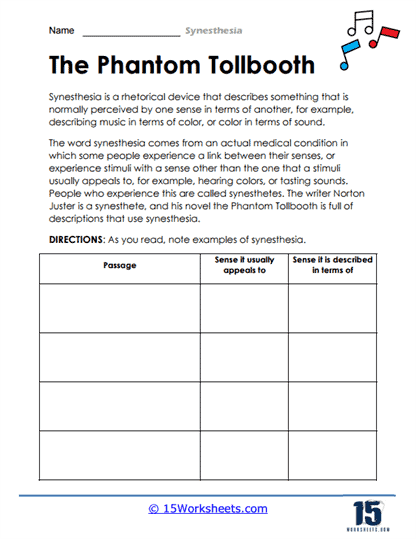Sensory Tollbooth

Worksheet Description
The worksheet is centered around “The Phantom Tollbooth” by Norton Juster, a novel that contains numerous examples of synesthesia—a rhetorical device and neurological condition where stimulation of one sensory pathway leads to automatic, involuntary experiences in a second sensory pathway. Students are given the task of identifying passages in the text that utilize synesthesia, noting what sense is typically engaged by the subject, and then describing how that sense is presented in terms of another, such as hearing colors or tasting sounds. This activity allows students to interact with the text on a deeper level, searching for specific examples of this fascinating sensory crossover. It encourages them to think about the text in both a literal and figurative sense.
This worksheet aims to teach students how to recognize and understand synesthesia in literature, providing them with a clear example of how it can be used to enhance descriptive writing. Through Norton Juster’s creative use of language, students learn to identify literary techniques that bring text to life in multidimensional ways. The activity also serves to deepen students’ appreciation for the imaginative possibilities in narrative writing and challenges them to think about how different sensory experiences can be portrayed through words. Additionally, by exploring “The Phantom Tollbooth,” students gain insights into the use of figurative language to create a rich, sensory experience for the reader.
